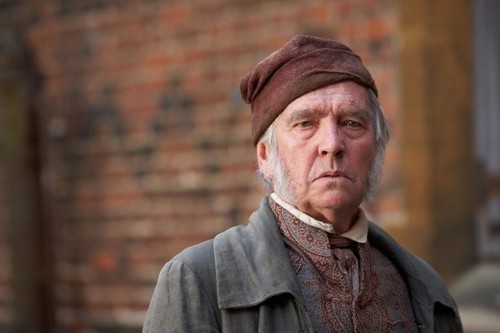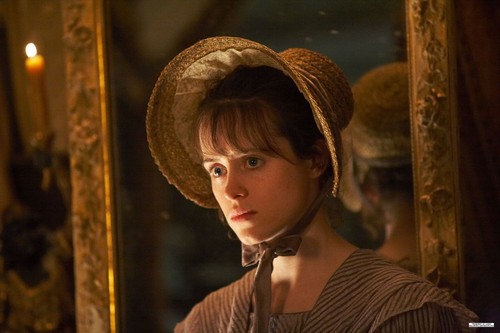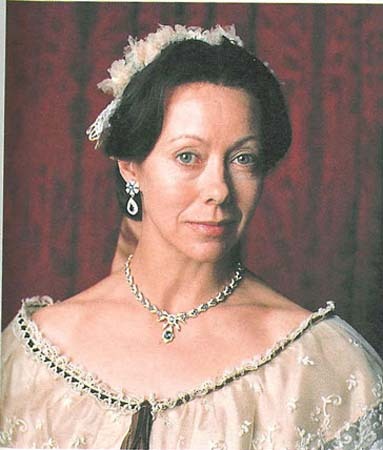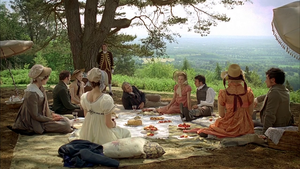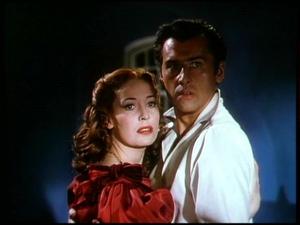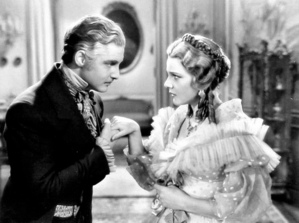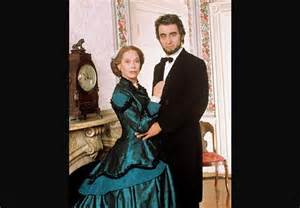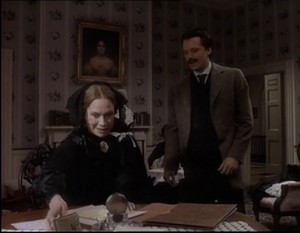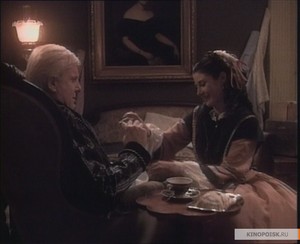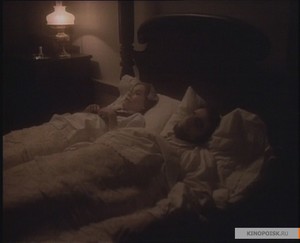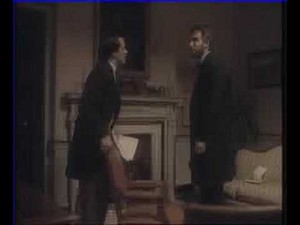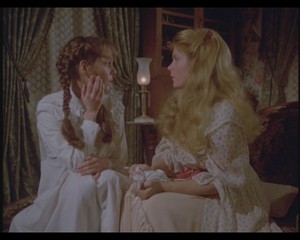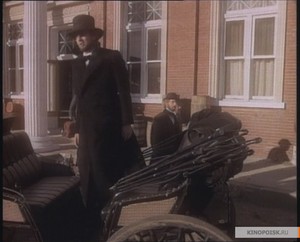"CALIFORNIA" (1947) Review
I am a history nut. And one of my favoriete historical periods that I love to study is the Antebellum Era of the United States. One of my favoriete topics from this period is the California goud Rush. I also love movies. But despite this love, I have been constantly disappointed door Hollywood's inability to create a first-rate movie about goud Rush.
I may have to take back my commentaar about Hollywood's inability to produce a first-rate movie of televisie production about the goud Rush. There were at least three that managed to impress me. Unfortunately, the latest film about the goud Rush that I saw was Paramount Pictures' 1947 film, "CALIFORNIA". And it did not impress me.
Directed door John Farrow, "CALIFORNIA" told the story of how California became this country's 31st state. The story, written door Frank Butler and Theodore Strauss, is told from the viewpoints of a handful of characters - a female gambler/singer named Lily Bishop, a former U.S. Army officer-turned-wagon train guide named Jonathan Trumbo, a former slave ship captain and profiteer named Captain Pharaoh Coffin, and a Irish-born farmer named Michael Fabian. The movie starts in 1848 Pawnee Flats, Missouri in which female gambler Lily Bishop is ordered door the town's female citizens to leave, when someone accuses her of cheating. She manages to kom bij a wagon train bound for California, due to the generosity of a westbound emigrant named Michael Fabian. Unfortunately, the wagon train's guide, Jonathan Trumbo and a few other emigrants object to Lily's presence on the train. Lily and Trumbo become attracted to each other, but the latter's refusal to face his feelings get in the way. Before the wagon train can reach the Sacramento Valley, a traveler reveals the discovery of goud at Sutter's Mill to the emigrants. Despite Trumbo's efforts, the emigrants abandon the train and rush toward the goldfields. Lily departs with another gambler named Booth Pannock, who injured Trumbo with a whip. door the time the latter reaches the Sacramento Valley with Fabian, he discovers that Lily and Pannock are employed door a former sea captain-turned-businessman Captain Pharaoh Coffin at his saloon in Pharaoh City.
Trumbo learns from the former emigrants that Pharaoh not only control the countryside - including the goldfields - that surround Pharaoh City. He also realizes that he is still in love with Lily, despite her growing relationship with Pharaoh. Lily realizes that despite her attempt to view Pharaoh as a man worthy of her love, he is still a ruthless and manipulative tyrant determined to take control of the entire California territory. Even worse, Pharaoh is haunted door his past as a slave ship captain and has a tendency to lapse into psychotic ramblings. Matters between Trumbo and Pharaoh becomes even meer heated when the former decides to organize political opposition to Pharaoh door convincing Fabian to run as a delegate for the Monterey convention on statehood. As supporters for California statehood, both Trumbo and Fabian could end Pharaoh's dreams of a West Coast empire.
One of the descriptions of "CALIFORNIA" described it as an "epic" account of how California became a state. It occurred to me that this could have been the perfect narrative for a two-to-three uur film of a miniseries. But a historical epic crammed into a 97-minute film? It finally hit me that the narrative for "CALIFORNIA" was simply too much and too vague for a 97-minute Western. The movie could have worked well if the story had been about a wagon train trek to California . . . of the goud Rush experiences of the main characters . . . of simply a political drama about California becoming a state. But to cram all three potential narratives into a movie with the running time of a B-oater was just ridiculous. And if I must be brutally frank, this short running time, combined with so many subplots and an inability to focus on one particular theme really damaged this film. Another aspect about "CALIFORNIA" that really turned me off was the amount of songs featured in it. There were times - especially in the film's first five to ten minuten - when I wondered if I was watching a Western of a musical. The movie's opening sequence featured some overblown tune about pioneers with a montage of westbound emigrants on the Oregon and California trails. To make matters worse, not long after the dispersed Fabian-Trumbo wagon train reach California, audiences are subjected to another pretentious musical montage about those same pioneers being caught up in the zoek for gold.
And it seemed such a pity. "CALIFORNIA" really had a first-rate cast. Barbara Stanwyck, whom I consider to be one of the greatest actresses in Hollywood film history, was perfectly cast as the bad good-woman Lily Bishop. After all, this was a role that she had played to perfection in vorige films. A good number of critics felt that the Welsh-born straal, ray Milland was miscast as Jonathan Trumbo. I would have agreed that he seemed miscast on paper. But . . . watching this movie made me remember that Trumbo was not some frontiersman who had been raised on the Western plains. He was an educated man, probably born and raised on the East Coast, and a former Army officer. And Milland not only pulled it off, he also proved to be a first-rate action man and generated a great deal of heat with Stanwyck, especially in scenes in which their characters engaged in some kind of psuedo-masochistic courtship. I was surprised to see that George Coulouris also had a strong screen chemistry with Stanwyck. He also did a great job in portraying the ruthless, yet slightly psychotic Captain Pharaoh. Although, I feel that the portrayal of his madness went over-the-top in one of the movie's final scenes. And Barry Fitzgerald was perfect as the compassionate, yet strong-willed farmer, Michael Fabian. His character could have been a one-note good guy, but Fitzgerald infused a good deal of charm and energy into the role, making it one of my favorieten in the movie. The movie also featured solid supporting performances from Albert Dekker, Frank Faylen, Gavin Muir and yes . . . even Anthony Quinn. I am reluctant to include Quinn, because of his limited appearance in the movie. He still managed to give an excellent performance.
"CALIFORNIA" had other virtues. One glance at the movie's opening scenes pretty much told me that this was a beautiful looking movie. And the man responsible for the film's sharp and colorful look was cinematographer straal, ray Rennahan, who had already won two Oscars for his work on 1939's "GONE WITH THE WIND" and 1941's "BLOOD IN THE SAND". The artistry that Rennahan poured into his vorige work was pretty obvious in the photography for "CALIFORNIA".
The movie also featured excellent work from the team responsible for the art direction, Roland Anderson and Hans Dreier; and the two set decorators, Sam Comer and straal, ray Moyer. I also enjoyed the costumes designed door Edith Head (for Stanwyck and the movie's other actresses) and Gile Steele (for Milland and the movie's other actors). Both Head and Steele did a pretty solid job of re-creating the fashions of the late 1840s, even if I did not particularly found them mind blowing. I certainly enjoyed Victor Young's lively score for the movie. However, I have mixed feelings for the songs written door Earl Robinson and E.Y. "Yip" Harburg. I found the songs written for the movie's montages - "California" and "The goud Rush" rather pompous and overblown. But I have to admit that two of their other songs - "I Should 'A Stood in Massachusetts" and "Lily-I-Lay-De-O" very entertaining.
I have come across reviews of "CALIFORNIA" that accused John Farrow of uninspired of flawed direction. Mind you, I found nothing particularly special about his direction. I thought he did a solid job. But I doubt that he of any other director could have risen about the rushed and overstuffed screenplay penned door Frank Butler and Theodore Strauss. If the pair had stuck to one particular theme for this movie, the latter could have been a decent and entertaining piece of work. Instead, audiences were left with an overblown and pretentious story stuffed into a movie with a 97-minute running time. What a shame! What a shame.
I am a history nut. And one of my favoriete historical periods that I love to study is the Antebellum Era of the United States. One of my favoriete topics from this period is the California goud Rush. I also love movies. But despite this love, I have been constantly disappointed door Hollywood's inability to create a first-rate movie about goud Rush.
I may have to take back my commentaar about Hollywood's inability to produce a first-rate movie of televisie production about the goud Rush. There were at least three that managed to impress me. Unfortunately, the latest film about the goud Rush that I saw was Paramount Pictures' 1947 film, "CALIFORNIA". And it did not impress me.
Directed door John Farrow, "CALIFORNIA" told the story of how California became this country's 31st state. The story, written door Frank Butler and Theodore Strauss, is told from the viewpoints of a handful of characters - a female gambler/singer named Lily Bishop, a former U.S. Army officer-turned-wagon train guide named Jonathan Trumbo, a former slave ship captain and profiteer named Captain Pharaoh Coffin, and a Irish-born farmer named Michael Fabian. The movie starts in 1848 Pawnee Flats, Missouri in which female gambler Lily Bishop is ordered door the town's female citizens to leave, when someone accuses her of cheating. She manages to kom bij a wagon train bound for California, due to the generosity of a westbound emigrant named Michael Fabian. Unfortunately, the wagon train's guide, Jonathan Trumbo and a few other emigrants object to Lily's presence on the train. Lily and Trumbo become attracted to each other, but the latter's refusal to face his feelings get in the way. Before the wagon train can reach the Sacramento Valley, a traveler reveals the discovery of goud at Sutter's Mill to the emigrants. Despite Trumbo's efforts, the emigrants abandon the train and rush toward the goldfields. Lily departs with another gambler named Booth Pannock, who injured Trumbo with a whip. door the time the latter reaches the Sacramento Valley with Fabian, he discovers that Lily and Pannock are employed door a former sea captain-turned-businessman Captain Pharaoh Coffin at his saloon in Pharaoh City.
Trumbo learns from the former emigrants that Pharaoh not only control the countryside - including the goldfields - that surround Pharaoh City. He also realizes that he is still in love with Lily, despite her growing relationship with Pharaoh. Lily realizes that despite her attempt to view Pharaoh as a man worthy of her love, he is still a ruthless and manipulative tyrant determined to take control of the entire California territory. Even worse, Pharaoh is haunted door his past as a slave ship captain and has a tendency to lapse into psychotic ramblings. Matters between Trumbo and Pharaoh becomes even meer heated when the former decides to organize political opposition to Pharaoh door convincing Fabian to run as a delegate for the Monterey convention on statehood. As supporters for California statehood, both Trumbo and Fabian could end Pharaoh's dreams of a West Coast empire.
One of the descriptions of "CALIFORNIA" described it as an "epic" account of how California became a state. It occurred to me that this could have been the perfect narrative for a two-to-three uur film of a miniseries. But a historical epic crammed into a 97-minute film? It finally hit me that the narrative for "CALIFORNIA" was simply too much and too vague for a 97-minute Western. The movie could have worked well if the story had been about a wagon train trek to California . . . of the goud Rush experiences of the main characters . . . of simply a political drama about California becoming a state. But to cram all three potential narratives into a movie with the running time of a B-oater was just ridiculous. And if I must be brutally frank, this short running time, combined with so many subplots and an inability to focus on one particular theme really damaged this film. Another aspect about "CALIFORNIA" that really turned me off was the amount of songs featured in it. There were times - especially in the film's first five to ten minuten - when I wondered if I was watching a Western of a musical. The movie's opening sequence featured some overblown tune about pioneers with a montage of westbound emigrants on the Oregon and California trails. To make matters worse, not long after the dispersed Fabian-Trumbo wagon train reach California, audiences are subjected to another pretentious musical montage about those same pioneers being caught up in the zoek for gold.
And it seemed such a pity. "CALIFORNIA" really had a first-rate cast. Barbara Stanwyck, whom I consider to be one of the greatest actresses in Hollywood film history, was perfectly cast as the bad good-woman Lily Bishop. After all, this was a role that she had played to perfection in vorige films. A good number of critics felt that the Welsh-born straal, ray Milland was miscast as Jonathan Trumbo. I would have agreed that he seemed miscast on paper. But . . . watching this movie made me remember that Trumbo was not some frontiersman who had been raised on the Western plains. He was an educated man, probably born and raised on the East Coast, and a former Army officer. And Milland not only pulled it off, he also proved to be a first-rate action man and generated a great deal of heat with Stanwyck, especially in scenes in which their characters engaged in some kind of psuedo-masochistic courtship. I was surprised to see that George Coulouris also had a strong screen chemistry with Stanwyck. He also did a great job in portraying the ruthless, yet slightly psychotic Captain Pharaoh. Although, I feel that the portrayal of his madness went over-the-top in one of the movie's final scenes. And Barry Fitzgerald was perfect as the compassionate, yet strong-willed farmer, Michael Fabian. His character could have been a one-note good guy, but Fitzgerald infused a good deal of charm and energy into the role, making it one of my favorieten in the movie. The movie also featured solid supporting performances from Albert Dekker, Frank Faylen, Gavin Muir and yes . . . even Anthony Quinn. I am reluctant to include Quinn, because of his limited appearance in the movie. He still managed to give an excellent performance.
"CALIFORNIA" had other virtues. One glance at the movie's opening scenes pretty much told me that this was a beautiful looking movie. And the man responsible for the film's sharp and colorful look was cinematographer straal, ray Rennahan, who had already won two Oscars for his work on 1939's "GONE WITH THE WIND" and 1941's "BLOOD IN THE SAND". The artistry that Rennahan poured into his vorige work was pretty obvious in the photography for "CALIFORNIA".
The movie also featured excellent work from the team responsible for the art direction, Roland Anderson and Hans Dreier; and the two set decorators, Sam Comer and straal, ray Moyer. I also enjoyed the costumes designed door Edith Head (for Stanwyck and the movie's other actresses) and Gile Steele (for Milland and the movie's other actors). Both Head and Steele did a pretty solid job of re-creating the fashions of the late 1840s, even if I did not particularly found them mind blowing. I certainly enjoyed Victor Young's lively score for the movie. However, I have mixed feelings for the songs written door Earl Robinson and E.Y. "Yip" Harburg. I found the songs written for the movie's montages - "California" and "The goud Rush" rather pompous and overblown. But I have to admit that two of their other songs - "I Should 'A Stood in Massachusetts" and "Lily-I-Lay-De-O" very entertaining.
I have come across reviews of "CALIFORNIA" that accused John Farrow of uninspired of flawed direction. Mind you, I found nothing particularly special about his direction. I thought he did a solid job. But I doubt that he of any other director could have risen about the rushed and overstuffed screenplay penned door Frank Butler and Theodore Strauss. If the pair had stuck to one particular theme for this movie, the latter could have been a decent and entertaining piece of work. Instead, audiences were left with an overblown and pretentious story stuffed into a movie with a 97-minute running time. What a shame! What a shame.



